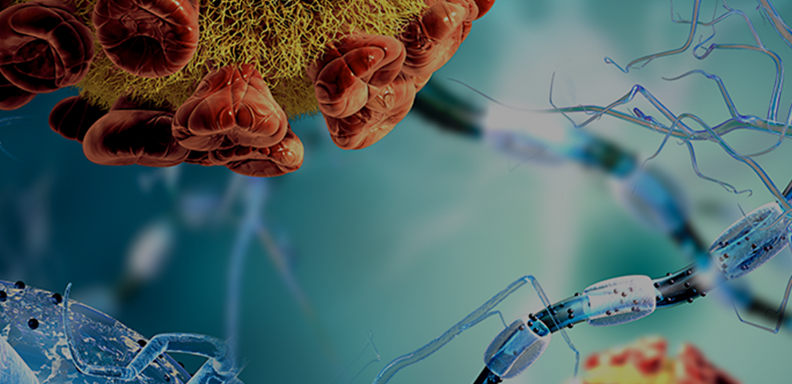Among our vertebrate peers, mammals have an exquisite ability to hear high-frequency sounds. This characteristic comes through courtesy of Prestin, a transmembrane motor protein found at the base of hair cells in the inner ear of mammals. Hair cells, found within the cochlea of the inner ear, are responsible for translating sound waves into neuronal signals understandable to our brain. When a sound-evoked vibration strikes a hair cell, it changes its electrical potential. This electrical signal controls the shape of millions of the motor proteins (Prestin) on the cell, leading to the contraction or elongation of the cell itself, boosting the amplitude of the auditory signal. If Prestin is knocked out or temporarily disabled, which can be done with a massive dose of aspirin, so too is much of a mammal’s hearing ability. Prestin’s role in helping amplify signals in mammalian hearing has been studied for more than two decades, but the structure of the protein and its potential shape-shifting mechanism remained undefined until recently.
Navid Bavi is a postdoctoral researcher and the 2017 Chicago Fellow in the lab of Eduardo Perozo, Professor of Biochemistry and Molecular Biology at the University of Chicago at UChicago. He and Perozo wanted to understand both what Prestin looks like and how it senses changes in voltage and transduces them into movements on the cellular level, a process known as electromotility.
“Sonar animals, like bats, or dolphins can hear at exceptionally high frequencies, and that’s because of these little motors in the specialized cells in the inner ear that can amplify the sound by constantly converting electrical energy to mechanical energy and vice-versa,” Bavi said. “But even though the proteins do such a critical thing, we didn’t know what their 3-D structure was. What do they look like at the molecular level, and how do they work?”
Bavi, Perozo and their colleagues at the University of Chicago used single-particle cryo-electron microscopy, or cryo-EM, to visualize Prestin’s structure under various functional conditions. They found that the protein transitions through six distinct states depending on how negatively-charged chloride, sulfate and salicylate ions are bound to it, which they described in a paper published December 16 in Nature.
“With these structural snapshots, we have a clue now how electrical energy is converted to mechanical movement,” Bavi said. “There is a potential that no other auxiliary mechanism is needed for sound amplification.”
The researchers also found that transmembrane segments of Prestin exhibit a type of hinged bending responsible for the protein’s transitions between compacted and expanded states. These transitions help the amplification of electrical signals. “We found a completely unexpected motion that is apparently unique to Prestin and unique to mammals. And this is what we call the ‘electromechanical elbow,’ it’s a movement of a single transmembrane helix,” Perozo said. “This motion allows extra expansion, extra motion, driven by voltage.”
Bavi and Perozo also identified how high concentrations of salicylates – a class of compounds that includes drugs like aspirin – are able to induce short-term, reversible hearing loss and tinnitus, a mechanism that has been used to explore deafness in animal models. Salicylates accomplish this by competing for the anion-binding site of Prestin, which immobilizes the protein.
“That effect is actually very informative on the whole physiology of the inner ear, because what happens is, you don’t really go deaf; your amplification of the signal goes down significantly,” Perozo said.
Prestin predates the evolution of mammals. The protein’s original function was the transport of anions across the cell membrane, and anion-transporting homologs of Prestin can be found in fish, mosquitoes and chickens, among other organisms. Prestin homologs have even been found to have developed electromotive sound amplification in fruit flies – though only mammals have put the protein to use in echolocation.
“That gives mammals an amazing evolutionary advantage,” Perozo said. “The only animals that can echolocate properly are mammals. Though there are birds that can do it primitively, it is the difference between knowing that there is an entrance to a cave ahead of you and being able to distinguish a fly versus a moth flying at the same time in opposite directions, like a bat can.”
Bavi sees several new avenues of growth from their project. He and Perozo are developing genetic modifications and related functional assays to understand which critical parts of the protein evolved to become a motor protein.
“Even though the non-mammalian Prestin and mammalian Prestin are very similar in terms of the coding of their amino acids, one evolved to be a motor protein and convert energy, and the other one cannot. We still don't know the structural reason for that,” Bavi said.
They also intend to explore how Prestin, which is a bilateral receptor, converts mechanical force into electrical energy, and to knit together the six distinct cryo-EM structures to figure out Prestin’s mechanism of action.
“The paper proposes a series of changes, and that's unique because there are multiple structures all obtained by cryo-EM. But this is our best guess, we don't know yet the true order of events,” Perozo said. “It is up to us to next put them all together and demonstrate the actual mechanism of action.”



